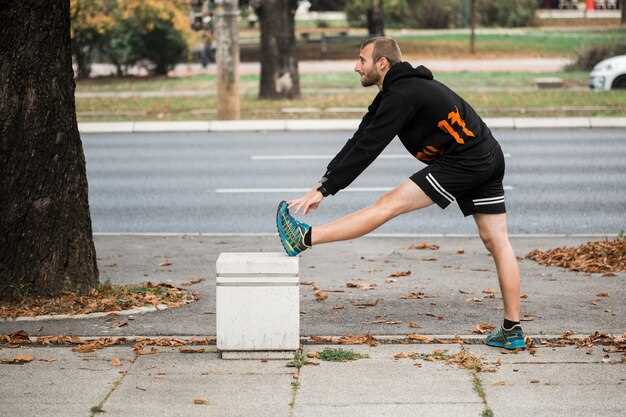
The method of starting a race can significantly impact its outcome and the performance of the competitors. In racing, two primary types of starts are commonly used: the standing start and the rolling start. Each style has its advantages and challenges, influencing not only the initial speed of the participants but also the overall strategy during the race.
A standing start requires competitors to begin from a complete stop, typically positioned in a predetermined grid formation. This method offers a clear advantage in gaining maximum acceleration from the very beginning; however, it also places a significant emphasis on driver skill and quick reaction times. For racers, mastering the standing start is crucial, as any hesitation can result in immediate disadvantages against opponents.
In contrast, the rolling start involves the competitors moving at a controlled pace before the official start signal is given. This technique allows drivers to build momentum and strategically position themselves for the race ahead. While it can create thrilling moments of overtaking and repositioning, it also requires a different approach to timing and distance management compared to the standing start.
Ultimately, understanding the intricacies of standing and rolling race starts is essential for both drivers and fans alike. By analyzing these methods, we can gain insights into how they shape the dynamics of a race and influence the strategies employed by competitors on the track.
Key Differences Between Standing and Rolling Starts in Motorsports
In motorsports, the method of starting a race significantly impacts the dynamics and strategy of the competition. Two primary types of starts are used: standing starts and rolling starts. Each method has distinct characteristics that can influence a driver’s performance and race outcome.
A standing start involves drivers positioning their vehicles in a stationary position, lined up on the starting grid. When the race begins, competitors accelerate from a complete stop. This type of start tests the skill of the drivers in managing tire traction and launch technique. It can result in dramatic changes in position early in the race, as drivers vie for the best possible getaway from the start line.
In contrast, a rolling start sees vehicles moving slowly before the official race start, usually in formation behind a safety car or pace car. Once the green light is given, drivers accelerate from this pre-established speed. Rolling starts tend to create a more gradual buildup of speed, allowing for smoother acceleration and less chance of wheel spin. They can lead to strategic positioning during the pre-start phase and may reduce the risk of accidents that sometimes occur in the frantic scramble of a standing start.
Another key difference is the impact on tire temperature. A standing start can lead to a colder tire situation, as the wheels have been stationary before the race begins. Conversely, rolling starts allow tires to warm up, which can improve grip and overall performance in the early laps.
Additionally, the types of racing discipline often determine the preferred start method. Many single-seater races, such as Formula 1, employ standing starts to emphasize driver skill and create excitement. Conversely, endurance races or events where safety is a major concern, such as NASCAR, frequently utilize rolling starts to minimize risks and promote safer conditions on track.
Ultimately, the choice between standing and rolling starts reflects a balance between excitement, safety, and competitive strategy in motorsports.
Advantages and Disadvantages of Each Start Method

Rolling Starts offer several benefits. For instance, they allow racers to maintain their momentum while transitioning from a stationary position. This method can reduce the risk of collisions during the initial phase, as all vehicles start moving at a controlled speed. Additionally, rolling starts can enhance the excitement for spectators, as they create a dynamic environment with constant movement.
However, rolling starts also come with drawbacks. The primary disadvantage is that it may create challenges in terms of positioning. Drivers need to be adept at maintaining their place while managing speed, which can lead to strategic complications. Furthermore, the variance in speed among different vehicles can cause unpredictable outcomes, potentially affecting race results.
Standing Starts, conversely, provide a level playing field. All participants begin from a complete stop, ensuring that no advantage is given based on prior momentum. This method often leads to dramatic race moments, as drivers must accelerate quickly to gain positions right from the start.
Despite their advantages, standing starts can present significant risks. The potential for pile-ups is higher, particularly in tightly grouped starts, as drivers jostle for early supremacy. Moreover, standing starts can induce higher levels of stress for drivers, creating pressure that might lead to mistakes in the initial moments of competition.
In summary, both start methods come with their own sets of advantages and disadvantages. Rolling starts encourage continuous movement but may lead to strategic complexities. In contrast, standing starts offer fairness and excitement but can increase the risk of accidents. Ultimately, the choice between these two methods may depend on the specific circumstances of the race and the preferences of competitors.
How to Strategize for Optimal Performance in Both Start Types

When considering the differences between standing and rolling race starts, it is crucial to tailor your strategy to maximize performance in each scenario. Understanding the fundamentals of both starts will help you execute a plan that capitalizes on your strengths and mitigates weaknesses.
For standing starts, focus on grip and launch power. Ensure your footwear provides adequate traction, as this can significantly influence your acceleration. Prior to the start, practice deep breathing techniques to calm your nerves and maintain focus. This mental preparation enables you to react quickly once the signal is given. During the start, aim to apply maximum force into the ground to propel yourself forward effectively.
In contrast, rolling starts require a different approach. Here, the emphasis lies on maintaining rhythm and pace. Before the start, establish a steady cadence that you can sustain. As you begin, initiate your movement slightly behind the pace of others to position yourself optimally without risking an early surge. Strategically, remain aware of your surroundings; this allows quick adjustments to your pace as you engage with fellow competitors. Aim for a smooth transition as you pick up speed, ensuring you don’t exert too much energy at the onset.
For both start types, engage in regular speed and agility training. Incorporate drills that mimic standing and rolling starts, allowing your body to adapt to the different demands. Consistent practice will enhance your reaction times and improve muscle memory, facilitating a seamless execution of either start technique during races. Additionally, review video footage of your starts to identify areas for improvement and refine your approach to each type.
Ultimately, successful strategy lies in the ability to adapt. By honing your skills for standing starts through explosive power training and refining your rhythm and pacing for rolling starts, you can achieve optimal performance regardless of the starting type. Balancing preparation and execution will make a significant difference in your race outcomes.




